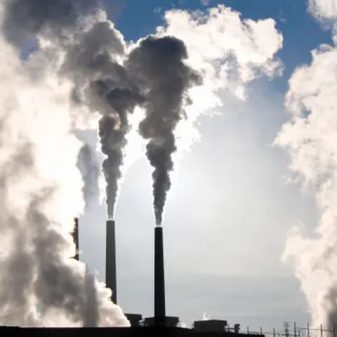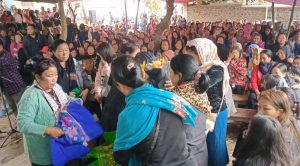
During thousands of years of civilisation in Manipur, the method of diligent and dedicated human observation has been the only instrument of recording weather conditions with the observers recording the data from manual labour engaging every day over months and years with painstaking efforts. The rate of advancement in the science of weather recording has been tepid for the state which amplified its mystic charm but encumbered development. But, in a noteworthy development the entire north-eastern states have been assimilated into the continuous process of automatic collection of weather data in India with ten local stations from Manipur included among a total of 86 Automatic Weather Stations (AWS) installed in the region by the India Meteorological Department. The objective is to enhance the weather and climate services of the NE region and the Ministry of Earth Sciences (MoES) under the Central sector scheme Atmosphere and Climate Research Modelling Observing Systems and Services (ACROSS) has launched the Integrated Meteorological Services for the North-East region, according to the officials of the ministry. However late it came, we are welcoming the establishment of the AWS with open arms as it is an important technological addition which has the potential to transform the magnitude of accomplishment in key development influencing sectors of the state, particularly agriculture, the predominant economic engagement of its people.
According to the ministry statement, from 2021, the entire observational network in the NE region will be augmented to improve the weather and forecasting skills over the region by commissioning of state of art systems like 8 X-Band Doppler Weather Radars, GPS sonde systems, snow gauges, and augmentation of automatic weather stations, automatic rain gauges, etc. In the last few years technology to make accurate automated measurements has become much more affordable and more straightforward to use all over the world. Yet, it was the perseverance of the minister that made it possible for rapid installation of so many stations, although he is targeting 200 such stations in the region altogether. For Manipur the AWS will be an indispensable technology because it is a boon for recording weather data which have been hampered from such rough terrain. For example, the presence of weather data from hill districts in the overall recording of the state is underwhelming. With the advanced devices that can maintain routine daily maintenance chores like emptying the rain gauge automatically, now we can track values for a range of weather parameters in every part of the hills event including even the remotest points without stressful and arduous manual attention and run them without throughout the year (not all the districts have acquired the stations though). This is a huge technological advantage in growing crops in the hilly regions, as weather parameters can be drastically different within a few kilometres difference there due to changes in altitude, and land slopes. Now, with the help of the AWS micro climate tracking in different parts of a particular hilly stretch will be enabled and it can positively influence the harvests of crops like oranges, tea and king chillies. Moreover, from a general point of view it can help progressive farmers encompass more and more reliable data to make informed decisions and help in mitigation of unforeseen risks. The state government should start intervention programmes for making the farmers, particularly those growing cash crops, take the advantage of the AWS and ensure the development of a robust information dispensing mechanism. With the help of AWS, the individual farmers can be guided on determining whether his cultivation land is suitable to grow a specific crop. In addition, the technology can give timely information regarding adverse environmental conditions such as excess or deficient rain and hail in a particular season. These are key information that can make or break the fate of the farmers. Experts say it can also help in anticipating weather conditions that may aggravate plant diseases or lead to pest and insect intrusion.
Other benefits of the AWS will include setting of observational network required for meeting aviation and other requirements through commissioning of Automated Weather Observing System/Heliport Automated Weather Observing System (AWOS/HAWOS), setting up/upgradation of Meteorological Centres (MCs) and other facilities over the region. It will also lead to augmentation of the observational network that will help fill the data gap areas in the region, leading to better accuracy of forecasts and consequent precision in Climate monitoring, analysis and climate prediction. Ultimately, it will help fill the data gap areas in the region, leading to better accuracy of forecasts and consequent precision in climate monitoring, analysis and climate prediction.





